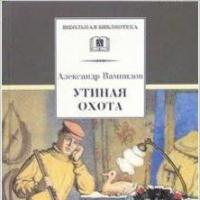The main types of chemical bonds. Test on the topic "types of chemical bonds" Test "Types of bonds and crystal lattices"
 1. The bond between metal ions and wandering electrons is called: IONIC COVALENT NON-POLAR METAL COVALENT POLAR
1. The bond between metal ions and wandering electrons is called: IONIC COVALENT NON-POLAR METAL COVALENT POLAR
 2. The chemical bond arising between the atoms of non-metals of the same type is called: IONIC COVALENT NON-POLAR METAL COVALENT POLAR
2. The chemical bond arising between the atoms of non-metals of the same type is called: IONIC COVALENT NON-POLAR METAL COVALENT POLAR
 3. The chemical bond arising between the atoms of non-metals with different electronegativity is called IONIC COVALENT NONPOLAR METAL COVALENT POLAR
3. The chemical bond arising between the atoms of non-metals with different electronegativity is called IONIC COVALENT NONPOLAR METAL COVALENT POLAR
 4. The chemical bond that occurs between the atoms of a typical metal and a typical non-metal is called: IONIC COVALENT NON-POLAR METAL COVALENT POLAR
4. The chemical bond that occurs between the atoms of a typical metal and a typical non-metal is called: IONIC COVALENT NON-POLAR METAL COVALENT POLAR
 5. Select a group of substances, which includes only substances with a covalent non-polar bond: N 2, NH 3, CO 2, NH 3, H 2, KF H 2 O, Na. Cl N 2, H 2, F 2, C Na, H 2, HF, Ca. CO 3
5. Select a group of substances, which includes only substances with a covalent non-polar bond: N 2, NH 3, CO 2, NH 3, H 2, KF H 2 O, Na. Cl N 2, H 2, F 2, C Na, H 2, HF, Ca. CO 3
 6. Select a group of substances, which includes only substances with a covalent polar bond: N 2, NH 3, CO 2, Na, NH 3, H 2, KF H 2 O, HCl F 2, HF, C Ca. CO 3
6. Select a group of substances, which includes only substances with a covalent polar bond: N 2, NH 3, CO 2, Na, NH 3, H 2, KF H 2 O, HCl F 2, HF, C Ca. CO 3
 7. Select a group of substances, which includes only substances with a metal bond: Na, CO 2, K, Al, NH 3, Fe H 2 O, Na. Cl N 2, H 2, F 2, C Na, H 2, HF, Ca. CO 3
7. Select a group of substances, which includes only substances with a metal bond: Na, CO 2, K, Al, NH 3, Fe H 2 O, Na. Cl N 2, H 2, F 2, C Na, H 2, HF, Ca. CO 3
 8. Select a group of substances, which includes only substances with an ionic bond: Na, K, Al, Fe CO 2, Na. Cl, NH 3, H 2, H 2 O, HCl F 2, C KF, Mg. I 2, Ca. Cl 2
8. Select a group of substances, which includes only substances with an ionic bond: Na, K, Al, Fe CO 2, Na. Cl, NH 3, H 2, H 2 O, HCl F 2, C KF, Mg. I 2, Ca. Cl 2
 9. Determine the species chemical bond and the type of crystal lattice, if the substance has a high melting and boiling point, solid, refractory, readily soluble in water. The solution is electrically conductive. Covalent polar bond and atomic crystal lattice Ionic bond and ionic crystal lattice Covalent polar bond and molecular crystal lattice. Metallic bond and metallic crystal lattice. Covalent non-polar bond and molecular crystal lattice
9. Determine the species chemical bond and the type of crystal lattice, if the substance has a high melting and boiling point, solid, refractory, readily soluble in water. The solution is electrically conductive. Covalent polar bond and atomic crystal lattice Ionic bond and ionic crystal lattice Covalent polar bond and molecular crystal lattice. Metallic bond and metallic crystal lattice. Covalent non-polar bond and molecular crystal lattice

Test "Types of bonds and crystal lattices"
Option number 1
A1 In a molecule of carbon disulfide CS2 chemical bond
1) ionic 2) metallic 3) covalent polar 4) covalent non-polar
A2 The atomic crystal lattice has
1) CH4 2) H2 3) O2 4) Si
A3. In ammonia (NH3) and barium chloride (BaCl2), the chemical bond, respectively:
1) ionic and covalent polar 3) covalent non-polar and metallic
2) covalent polar and ionic 4) covalent non-polar and ionic
A4. The ionic crystal lattice has
1) SiO2 2) Na2O 3) CO 4) P4
A5. Which of the proposed statements are correct:
A. Substances with molecular lattice have low melting points
B. Substances with an atomic lattice are plastic and have high electrical conductivity.
1) Only A is true 2) Only B is true 3) Both statements are true 4) Both statements are false
A6 The ionic character of the bond is most pronounced in the compound
1) CCl4 2) SiO2 3) CaF2 4) NH3
A7. In which series do all substances have a covalent polar bond
1) HCl, NaCl, Cl2 2) O2, H2O, CO2 3) H2O, NH3, CH4 4) NaBr, HBr, CO
A8. Crystal cell carbon dioxide(CO2)
A9. a hydrogen bond is formed between molecules
1) C2H6 2) C2H5OH 3) C6H5CH3 4) NaCl
A10. Partially positive charge in OF2 molecule
1) at the O atom 2) at the F atom 3) at the O and F atoms 4) All atoms are negatively charged
A11. The molecular crystal lattice has
1) NH3 2) Na2O 3) ZnCl2 4) CaF2
A12. The atomic crystal lattice has
1) Ba (OH) 2 2) diamond 3) I2 4) Al2 (SO4) 2
A13. The ionic crystal lattice has
1) ice 2) graphite 3) HF 4) KNO3
A 14. The metal crystal lattice has
1) graphite 2) Cl2 3) Na 4) NaCl
A1. Substances with only ionic bonds are listed in the series
1) F2, CCl4, KCl 2) NaBr, Na2O, KI 3) SO2, P4, CaF2 4) H2S, Br2, K2S
A2. Crystal lattice of graphite
1) Ionic 2) Molecular 3) Atomic 4) Metallic
A3. The molecular lattice has
1) Na2O 2) SiO2 3) CaF2 4) NH3
A4. Crystalline lattice of calcium chloride (CaCl2)
1) Ionic 2) Molecular 3) Atomic 4) Metallic
A5. In what compound is the covalent bond between atoms formed by the donor-acceptor mechanism?
1) CCl4 2) SiO2 3) CaF2 4) NH4Cl
A6. Substances with hardness, refractoriness, good solubility in water, as a rule, have a crystal lattice
1) Ionic 2) Molecular 3) Atomic 4) Metallic
A7. When connecting atoms of the same chemical element a bond is formed
1) Ionic 2) Covalent polar 3) Covalent non-polar 4) Metallic
A8. Substances with atomic crystal lattice
1) very hard and refractory 3) conduct electric current in solutions
2) fragile and low-melting 4) conduct electric current in melts
A9. Electron pair in the HBr molecule
1) does not exist 2) is in the middle 3) is shifted to the H atom 4) is shifted to the Br atom
A10. Substance of molecular structure
1) O3 2) BaO 3) C 4) K2S
A11. Diamond crystal lattice
A12. Potassium hydroxide (KOH) crystal lattice
1) atomic 2) metallic 3) ionic 4) molecular
A13. The crystal lattice of hydrochloric acid (HCl)
1) ionic 2) molecular 3) atomic 4) ionic
A14. Iron crystal lattice
1) metallic 2) molecular 3) ionic 4) atomic
IN 1. Establish a correspondence between the connection and the type of connection in the connection.
IN 2. Match the connection and the type of crystal lattice
AT 3. Establish a correspondence between the connection and the type of connection in the connection.
A covalent bond is the most general type of chemical bond that arises due to the sharing of an electron pair through an exchange mechanism, when each of the interacting atoms supplies one electron, or through a donor-acceptor mechanism, if an electron pair is transferred for common use by one atom (donor) to another atom (to the acceptor) (Fig. 3.2).
A classic example of a non-polar covalent bond (the difference in electronegativities is zero) is observed in homonuclear molecules: H – H, F – F. The energy of a two-electron two-center bond is in the range of 200–2000 kJ ∙ mol –1.
When a heteroatomic covalent bond is formed, an electron pair is displaced towards a more electronegative atom, which makes such a bond polar. (HCl, H 2O). The ionicity of the polar bond in percent is calculated using the empirical relationship 16 (χ A - χ B) + 3.5 (χ A - χ B) 2, where χ A and χ B are the electronegativities of the A and B atoms of the AB molecule. In addition to polarizability, a covalent bond has the property of saturation - the ability of an atom to form as many covalent bonds as it has energetically available atomic orbitals. The third property of covalent bonds - directionality - is discussed below (see the method of valence bonds).
An ionic bond is a special case of a covalent bond, when the formed electron pair completely belongs to a more electronegative atom, which becomes an anion. The basis for separating this bond into a separate type is the fact that compounds with such a bond can be described in the electrostatic approximation, considering the ionic bond due to the attraction of positive and negative ions. The interaction of ions of opposite sign does not depend on the direction, and the Coulomb forces do not possess the saturation property. Therefore, each ion in an ionic compound attracts such a number of ions of the opposite sign that a crystal lattice is formed ionic type... There are no molecules in an ionic crystal. Each ion is surrounded by a certain number of ions of a different sign (ion coordination number). Ionic pairs can exist in the gaseous state as polar molecules. In the gaseous state, NaCl has a dipole moment of ~ 3 ∙ 10 –29 C ∙ m, which corresponds to a 0.8 displacement of the electron charge by a bond length of 0.236 nm from Na to Cl, ie Na 0.8 + Cl 0.8–.
The metallic bond arises as a result of the partial delocalization of valence electrons, which move fairly freely in the metal lattice, electrostatically interacting with positively charged ions. The binding forces are not localized and not directed, and delocalized electrons cause high thermal and electrical conductivity.
Hydrogen bond. Its formation is due to the fact that, as a result of a strong displacement of an electron pair towards an electronegative atom, a hydrogen atom with an effective positive charge can interact with another electronegative atom (F, O, N, less often Cl, Br, S). The energy of such electrostatic interaction is 20–100 kJ ∙ mol –1. Hydrogen bonds can be intra- and intermolecular. Intramolecular hydrogen bond is formed, for example, in acetylacetone and is accompanied by the closure of the cycle (Fig. 3.3).
Molecules of carboxylic acids in non-polar solvents dimerize due to two intermolecular hydrogen bonds (Fig. 3.4).
Exclusively important role hydrogen bond plays in biological macromolecules, such inorganic compounds as H 2O, H 2F 2, NH 3. Due to hydrogen bonds, water is characterized by such high melting and boiling points compared to H 2E (E = S, Se, Te). If there were no hydrogen bonds, then the water would melt at –100 ° С, and boil at –80 ° С.
Van der Waals (intermolecular) bond is the most universal look intermolecular bond is caused by dispersion forces (induced dipole - induced dipole), inductive interaction (permanent dipole - induced dipole) and orientational interaction (permanent dipole - permanent dipole). The energy of the van der Waals bond is less than the hydrogen bond and amounts to 2–20 kJ ∙ mol –1.
Chemical bond in solids. The properties of solids are determined by the nature of the particles occupying the nodes of the crystal lattice and the type of interaction between them.
Solid argon and methane form atomic and molecular crystals, respectively. Since the forces between atoms and molecules in these lattices are of the weak van der Waals type, such substances melt at rather low temperatures. Most of substances that are liquid and gaseous at room temperature form molecular crystals at low temperatures.
The melting points of ionic crystals are higher than atomic and molecular ones, since the electrostatic forces acting between ions are much higher than the weak van der Waals forces. Ionic compounds are harder and more fragile. Such crystals are formed by elements with very different electronegativities (for example, alkali metal halides). Ionic crystals containing polyatomic ions have lower melting points; so for NaCl t pl. = 801 ° C, and for NaNO 3 t pl = 311 ° C.
In covalent crystals, the lattice is built of atoms connected by a covalent bond; therefore, these crystals have high hardness, melting points, and low thermal and electrical conductivity.
Crystalline lattices formed by metals are called metallic. The sites of such lattices contain positive metal ions, and the interstices contain valence electrons (electron gas).
The d-elements have the highest melting point of metals, which is explained by the presence in the crystals of these elements of a covalent bond formed by unpaired d-electrons, in addition to the metallic bond formed by s-electrons.
Types of chemical bonds.
Part A
1) Li+ and I - 2) Br- and H + 3) H+ and B 3+ 4) S 2- and O 2-
1) ionic 2) metallic 3) covalent non-polar 4) covalent polar
1) ionic 2) metallic 3) covalent non-polar 4) covalent polar
1) ionic 2) metallic 3) covalent non-polar 4) covalent polar
1) NaCl, KOH 2) HI, H 2 O 3) CO 2 , Br 2 4) CH 4 , F 2
1)1 2)2 3)3 4)4
1) KCl 2) CO 3) H 2 O 4) HCl
Part B.
A) iron 1) ionic
D) nitrogen
Part C
Types of chemical bonds.
Part A
1.Chemical bond in the hydrogen fluoride molecule
1) ionic 2) metallic 3) covalent non-polar 4) covalent polar
2.ionic bond is formed between atoms
1) sodium and fluorine 2) sulfur and hydrogen 3) sulfur and oxygen 4) chlorine and hydrogen
3. Ionic bond is formed between ions
1) Li+ and I - 2) Br- and H + 3) H+ and B 3+ 4) S 2- and O 2-
4. Chemical bond between atoms of chemical elements with serial numbers 3 and 35
1) ionic 2) metallic 3) covalent non-polar 4) covalent polar
5. The chemical bond between atoms, the electronegativities of which do not differ from each other, is called
1) ionic 2) metallic 3) covalent non-polar 4) covalent polar
6. Chemical bond of an atom of a chemical element with six electrons on the outer electron layer with hydrogen
1) ionic 2) metallic 3) covalent non-polar 4) covalent polar
7. Covalent polar bond in each of two substances:
1) NaCl, KOH 2) HI, H 2 O 3) CO 2 , Br 2 4) CH 4 , F 2
8. Two common electron pairs are present in the molecule
1) hydrogen 2) hydrogen bromide 3) hydrogen sulfide 4) ammonia
9. One covalent bond has a molecule
1) hydrogen iodide 2) nitrogen 3) methane 4) oxygen
10. The number of common electron pairs in EO compounds 2
1)1 2)2 3)3 4)4
11. Specify the formula for the extra compound
1) KCl 2) CO 3) H 2 O 4) HCl
Part B.
12. Establish a correspondence between the name of the compound and the type of chemical bond in this compound.
Compound name Chemical bond type
A) iron 1) ionic
B) oxygen 2) covalent polar
C) water 3) covalent non-polar
D) lithium bromide 4) metal
D) nitrogen
13. Covalent polar bond takes place in compounds:
1) hydrogen sulfide 2) carbon monoxide 3) fluorine 4) zinc 5) potassium fluoride 3) fluorine
14 molecules have three covalent polar bonds
1) nitrogen 2) phosphine 3) carbon dioxide 4) ammonia 5) methane
Part C
15. Give examples of four potassium compounds having both ionic and covalent bonds.
16. Name a compound that has one covalent non-polar bond of atoms, the electrons of which are located on three energy layers.



